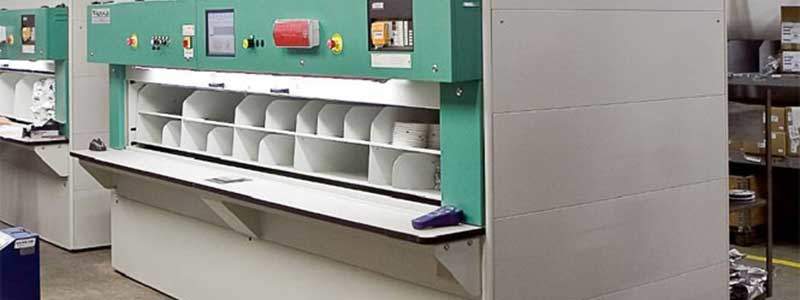
VLMs and Vertical Carousels
- posted by: Richard Haynes
Boost your warehouse efficiency with Horizontal Carousel storage systems. But what about the alternatives like Vertical Carousels and Vertical Lift Modules (VLMs)? Let’s explore their differences to help you choose the right fit.
Flexible Storage Solutions
Choosing one system doesn’t mean you’re locked in. Each has its pros and cons, even when compared to manual systems. Here’s an overview of Vertical Carousels and VLMs to help you find the best fit for your business.
Vertical Lift Module (VLM)
VLMs maximize storage within the same footprint, making them a great choice for any storage unit. They offer adaptability for businesses handling a wide range of products. With shelf heights adjustable up to 28 inches, VLMs automatically adjust based on item height, saving valuable worker time. The module’s height can also be tailored to your warehouse dimensions. While slightly more expensive than Vertical Carousels, their flexibility makes them worth considering.
Vertical Carousel
Unlike the horizontal version, Vertical Carousels optimize unused vertical floor space, making them ideal for compact warehouses. By integrating multiple units, you can boost throughput and picking speed. Although they offer less storage, their smaller footprint allows for more machines. Additionally, they easily control temperature and humidity. However, they are slower than horizontal units and require even item distribution.
Maintenance and Certification
While these systems enhance operational performance, they require regular input and maintenance. Periodic servicing is crucial to maintain certification compliance, similar to forklifts and cranes.
Expert Guidance
Choosing the right module can be challenging for first-timers. Our goal is to clarify your options and guide you to the best choice. With extensive experience in designing and installing carousels, VLMs, and various storage systems, we help businesses expand and grow.
About Us
Located in Wetherby, West Yorkshire, 2h Storage Solutions is an independent, family-run business with over two decades of experience. We pride ourselves on successfully implementing numerous warehouse pallet racking solutions for a diverse clientele in commercial and industrial sectors across Yorkshire and the North East.
As a leading racking company in the North, we prioritize understanding and meeting each customer’s unique storage requirements. Our comprehensive racking service includes initial site surveys, in-depth consultations, and seamless design, supply, and installation processes. We take the time to listen, understand your objectives, and deliver the optimal solution from our selection of top-tier products.
Contact Us
If your business is in the North of England, we are well-equipped to serve you effectively. Contact us today at 01937 585057 for more information on any of our industrial racking systems.

